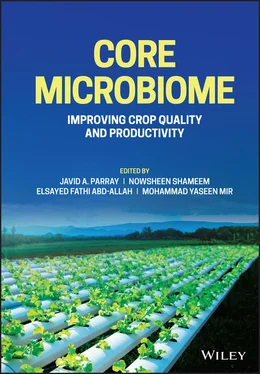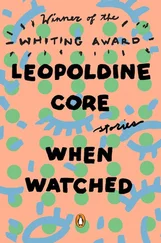88 88Carlstrom, C.I., Field, C.M., Bortfeld-Miller, M., Müller, B., Sunagawa, S., and Vorholt, J.A. (2019). Synthetic microbiota reveal priority effects and keystone strains in the Arabidopsis phyllosphere. Nature Ecology & Evolution Oct 3 (10): 1445–1454.
89 89Steven, W.K., Timothy, K.O., Holly, K.A., Stephen, P.H., Joseph, W., and Jessica, L.G. (2014). Relationships between phyllosphere bacterial communities and plant functional traits in a neotropical forest. PNAS sep 23 111 (38): 13715–13720.
90 90Delmotte, N., Claudia, K., Samuel, C., Gerd, I., Bernd, R., Ralph, S., Christian, V.M., and Julia, A.V. (2009). Community proteogenomics reveals insights into the physiology of phyllosphere bacteria. Proceedings of the National Academy of Sciences of the United States of America Sep 22 106 (38): 16428–16433.
91 91Vorholt, J.A. (2012). Microbial life in the phyllosphere. Nature Reviews. Microbiology Dec 10 (12): 828–840.
92 92Haefele, D.M. and Lindow, S.E. (1987). Flagellar motility confers epiphytic fitness advantages upon Pseudomonas syringae. Applied and Environmental Microbiology Oct 1 53 (10): 2528–2533.
93 93Tao, C., Kinya, N., Xiaolin, W., Reza, S., Jin, X., Lingya, Y., Bradley, C.P., Li, M., James, K., Yu, C., Li, Z., Nian, W., Ertao, W., Xiu-Fang, X., and Sheng, Y.H. (2020). A plant genetic network for preventing dysbiosis in the phyllosphere. Nature Apr 8 580 (7805): 653–657.
94 94Blin, K., Shaw, S., Steinke, K., Villebro, R., Ziemer, N., Lee, S.Y., Medema, M.H., and Weber, T. (2019). antiSMASH 5.0: Updates to the secondary metabolite genome mining pipeline. Nucleic Acids Research Apr 29 47 (1): 81–87.
95 95Kawaguchi, K., Yurimoto, H., Oku, M., and Sakai, Y. (2011). Yeast methylotrophy and autophagy in a methanol-oscillating environment on growing Arabidopsis thaliana leaves. PLoS One Sep 26 6 (9): e25257.
96 96Knief, C., Delmotte, N., Chaffron, S., Stark, M., Innerebner, G., Wassmann, R., Von Mering, C., and Vorholt, J.A. (2012). Metaproteogenomic analysis of microbial communities in the phyllosphere and rhizosphere of rice. The ISME Journal Jul 6 (7): 1378–1390.
97 97Boller, T. (1993). “Antimicrobial Functions of the Plant Hydrolases, Chitinase and ß-1,3-Glucanase,” in Mechanisms of Plant Defense Responses. Springer 2: 391–400.
98 98Essghaier, B., Hedi, A., Halaoui, M.R., Boudabous, A., and Sadfi-Zouaoui, N. (2012). In vivo and in vitro evaluation of antifungal activities from a halotolerant Bacillus subtilis strain J9. African Journal of Microbiology May 23 6 (19): 4073–4083.
99 99Urquhart, E.J. and Punja, Z.K. (2002). Hydrolytic enzymes and antifungal compounds produced by Tilletiopsis species, phyllosphere yeasts that are antagonists of powdery mildew fungi. Canadian Journal of Microbiology Mar 1 48 (3): 219–229.
100 100Muhammad, S., Nicole, M., Zahida, H.P., and Milton, B.T. (2017). Microbial interactions in the phyllosphere increase plant performance under herbivore biotic stress. Frontiers in Microbiology Jan 20 8 (41): 1–10.
101 101Eitzen, K., Sengupta, P., Kroll, S., Kemen, E., and Doehlemann, G. (2020). An antagonistic driver of the microbial phyllosphere suppresses infection of Arabidopsis thaliana by the oomycete pathogen Albugo laibachii via a secreted hydrolase. bioRxiv Apr 21: 1–36.
102 102Lopez-Mondejar, R., Ros, M., and Pascual, J.A. (2011). Mycoparasitism-related genes expression of Trichoderma harzianum isolates to evaluate their efficacy as biological control agent. Biological Control Jan 56 (1): 59–66.
103 103Volks, B. and May, R. (2001). Biological control of Pseudomonas syringae PV. glycine by epiphytic bacteria under field conditions. Microbial Ecology Feb 41: 132–139.
104 104Simionato, A.S., Navarro, M.O.P., de Jesus, M.L.A, Barazetti, A.R., da Silva, C.S., and Simoes, G.C. (2017). The effect of phenazine-1-carboxylic acid on mycelial growth of Botrytis cinerea produced by Pseudomonas aeruginosa LV strain. Front Microbiology Jun 14 8 (1102): 1–9.
105 105Chin-A-Woeng, T.F.C.Bloemberg, G.V., and Lugtenberg, B.J.J. (2003). Phenazines and their role in biocontrol by Pseudomonas bacteria. The New Phytologist Mar 3 157: 503–523.
106 106Yasmin, S., Hafeez, F.Y., Mirza, M.S., Rasul, M., Arshad, H.M.I., Zubair, M., and Iqbal, M. (2017). Biocontrol of Bacterial Leaf Blight of rice and profiling of secondary metabolites produced by rhizospheric Pseudomonas aeruginosa BRp3. Front. Microbiology Sep 26 8 (1895): 1–23.
107 107Noor, A.I., Abdiad, A.N., and Aris, T.W. (2016). Rice phyllosphere actinomycetes as biocontrol agent of bacterial leaf blight disease on rice. Asian Journal of Plant Pathology Mar 15 10 (1-2): 1–8.
108 108Vogel, C., Bodenhausen, N., Gruissem, W., and Vorholt, J.A. (2016). The Arabidopsis leaf transcriptome reveals distinct but also overlapping responses to colonization by phyllosphere commensals and pathogen infection with impact on plant health. New Phytologist Oct 212 (1): 192–207.
109 109Ryffel, F., Helfrich, E.J., Kiefer, P., Peyriga, L., Portais, J.C., Piel, J., and Vorholt, J.A. (2016). Metabolic footprint of epiphytic bacteria on Arabidopsis thaliana leaves. The ISME Journal Mar 10 (3): 632–643.
110 110Lee, G.H. and Ryu, C.M. (2016). Spraying of leaf-colonizing Bacillus amyloliquefaciens protects pepper from Cucumber mosaic virus. Plant Disease Oct 14 100 (10): 2099–2105.
111 111Savary, S., Willocquet, L., Pethybridge, S.J., Esker, P., McRoberts, N., and Nelson, A. (2019). The global burden of pathogens and pests on major food crops. Nature Ecology & Evolution Mar 3 (3): 430–439.
112 112Jeffrey, B.J., Gary, E.V., Fanny, B.I., Aleksa, O., Mine, H.W., Lee, E.J., Botond, B., Jason, C.H., and Timur, M. (2012). Considerations for using bacteriophages for plant disease control. Bacteriophage. Oct 1 2 (4): 208–214.
113 113Marie, L., Wenke, S., Dieter, V., Tom, E., Babette, M., Els, P., Roeland, S., and Sarah, L. (2020). Modes of Action of Microbial Biocontrol in the Phyllosphere. Frontiers in Microbiology July 14 11 (1610): 1–18.
114 114Qin, C., Tao, J., Liu, T., Liu, Y., Xiao, N., Li, T., Gu, Y., and Meng, D. (2019). Responses of phyllosphere microbiota and plant health to application of two different biocontrol agents. AMB Express Mar 28 9 (42): 1–13.
115 115Hao, W.N., Li, H., Hu, M.Y., Yang, L., and Rizwan-ul-Haq, M. (2011). Integrated control of citrus green and blue mold and sour rot by Bacillus amyloliquefaciens in combination with tea saponin. Postharvest Biology and Technology 59: 316–323.
116 116Card, S.D., Walter, M., Jaspers, M.V., Sztejnberg, A., and Stewart, A. (2009). Targeted selection of antagonistic microorganisms for control of Botrytis cinerea of strawberry in New Zealand. Australas Plant Pathology Mar 38 (2): 183–192.
117 117Fu, G., Huang, S., Ye, Y., Wu, Y., Cen, Z., and Lin, S. (2010). Characterization of a bacterial biocontrol strain B106 and its efficacy on controlling banana leaf spot and post-harvest anthracnose diseases. Biological Control 55 (1): 1–10.
118 118Alexander, B.J.R. and Stewart, A. (2001). Glasshouse screening for biological control agents of Phytophthora cactorum on apple (Malus domestica). New Zealand Journal of Crop and Horticultural Science 29 (3): 159–169.
119 119Abraham, A., Philip, S., Jacob, C.K., and Jayachandran, K. (2013). Novel bacterial endophytes from Hevea brasiliensis as biocontrol agent against Phytophthora leaf fall disease. BioControl Oct 58 (5): 675–684.
120 120 Hoitink, H.A. and Boehm, M.J. (1999). Biocontrol within the context of soil microbial communities: A substrate-dependent phenomenon. Annual Review of Phytopathology Sep 37 (1): 427–446.
121 121 Fernando, W.D., Ramarathnam, R., Krishnamoorthy, A.S., and Savchuk, S.C. (2005). Identification and use of potential bacterial organic antifungal volatiles in biocontrol. Soil Biology & Biochemistry May 1 37 (5): 955–964.
Читать дальше











